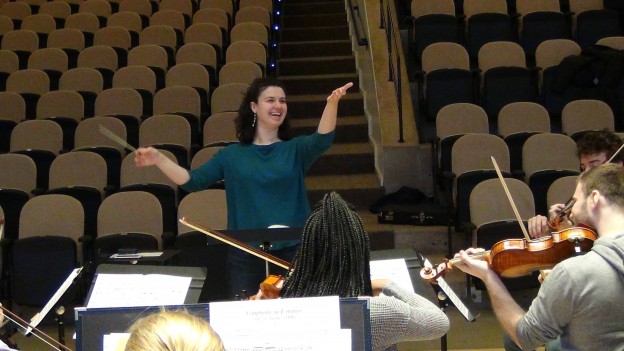This spring, the Swarthmore College Lab Orchestra will be performing Prokofiev’s “Peter and the Wolf” alongside a narration of the fairytale. Composed in the early 1930s for a children’s theater in Russia, “Peter and the Wolf” combines a children-centric approach with the musical nuance and variation that adult audiences can also find appealing. Professor Andrew Hauze of the Music Program hopes that the piece’s duality will draw an array of audience members to the 10am performance on April 6th, targeting college students as well as families with young children.
“The great thing about ‘Peter and the Wolf’ is it’s a piece you can enjoy at absolutely any age because the music is so terrific and unsimplified. Though the music is very clear and approachable, it isn’t in any way simplified. So if you’re an adult who’s been listening to music your whole life you’re still going to find it interesting and compelling,” remarked Professor Hauze.
Yet at the same time, as a narrated fairytale, “Peter and the Wolf” accesses a child’s imagination and delights in its colorful representation of characters. The outline of this peculiar fairytale begins with Peter, a young boy playing in the woods outside his house, and a bird and a duck who are constantly teasing each other. Peter’s grandfather, a rather grouchy character, scolds Peter for playing outside and warns him about wolves that might be prowling in the area. And as soon as Peter goes inside, a wolf does indeed show up. For the rest of the fairytale, Peter, the bird, and the duck devise a plan to distract and catch the wolf. Towards the end of the tale, hunters show up in pursuit of the wolf, but instead of shooting the creature, the entire group brings the wolf to the zoo; and there, the story ends.
The story’s visual imagery and clear narrative have helped Shira Samuels-Shragg ’20 lead the orchestra. As the only current advanced conducting student, Samuels-Shragg has had the opportunity to rehearse with the Lab Orchestra for two hours each week with Professor Hauze’s guidance.
“One of the challenges for a conductor is getting inside the piece and figuring out what the music is saying, and what is fun about this piece is that there is no guesswork; there’s the narration and it’s a very explicitly told story. We have very visual imagery to work with, so having a literal cornerstone is helpful and fun,” Samuels-Shragg said about the rehearsal process.
In addition to explicit visual imagery and a straightforward narrative, “Peter and the Wolf” has specific instrumental representations for each of the characters: the bird is played by the flute, the duck is the oboe, the cat is the clarinet, the grandfather the bassoon, the strings are Peter, the horn is the wolf, and percussion are the hunters. All of these instruments constitute a 25-piece orchestra this semester, in addition to narrator Josie Ross, and of course conductor Samuels-Shragg.
Since its inception three years ago, the Lab Orchestra has taken on a variety of fun and unusual projects, including playing in the pit for dance concerts at the Lang Performing Arts Center and performing at the Pennsylvania Academy for Fine Arts. This spring’s project of “Peter and the Wolf” is another fascinating musical work to add to the Lab Orchestra’s diverse repertory.
“Peter and the Wolf” will be performed by the Lab Orchestra at 10am on April 6th at Lang Concert Hall at Swarthmore College.
Marion Kudla ’19
